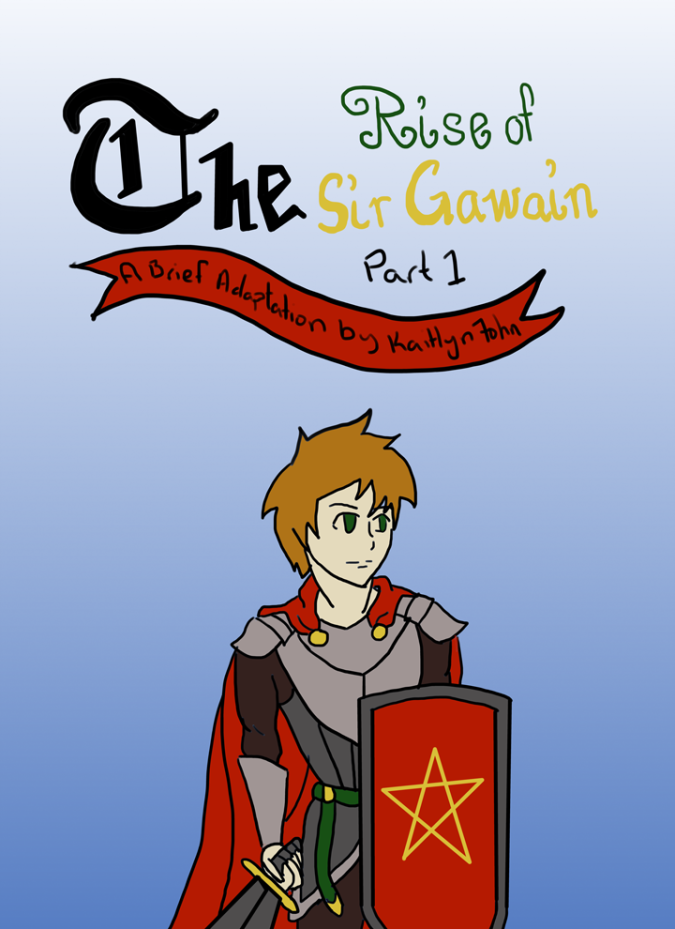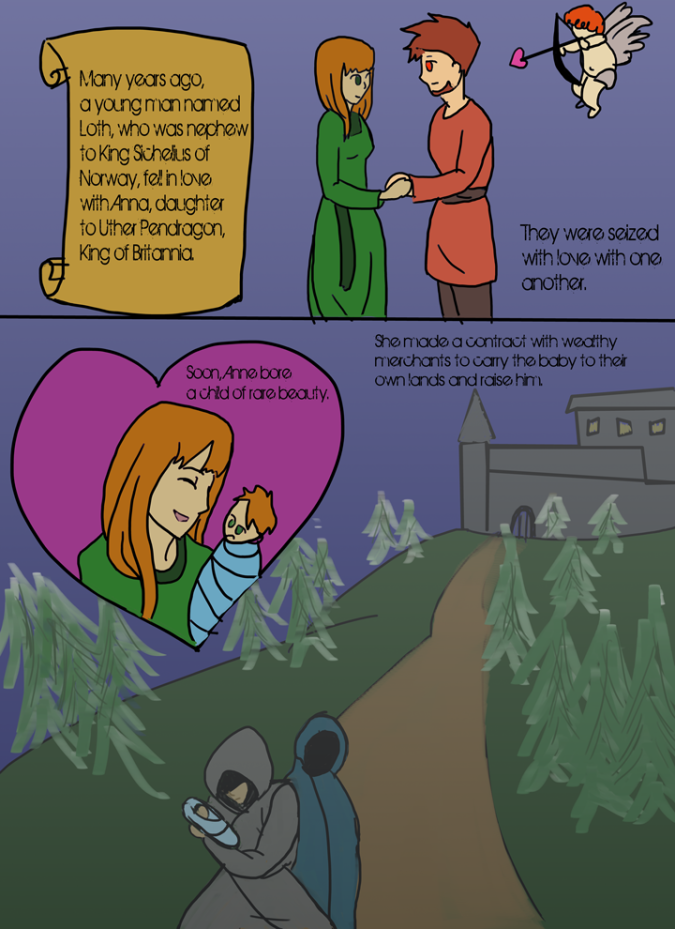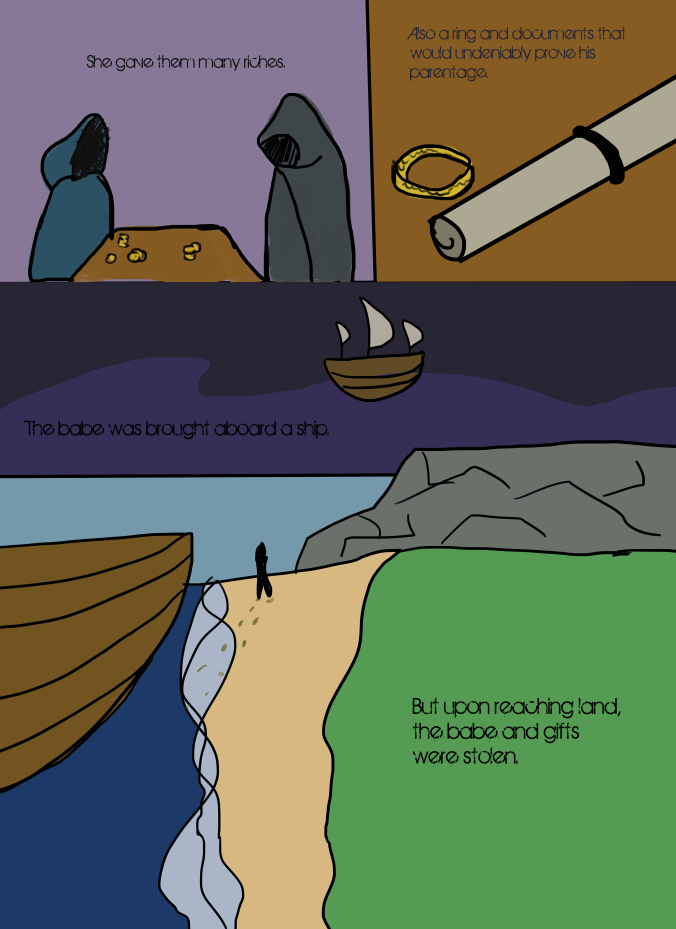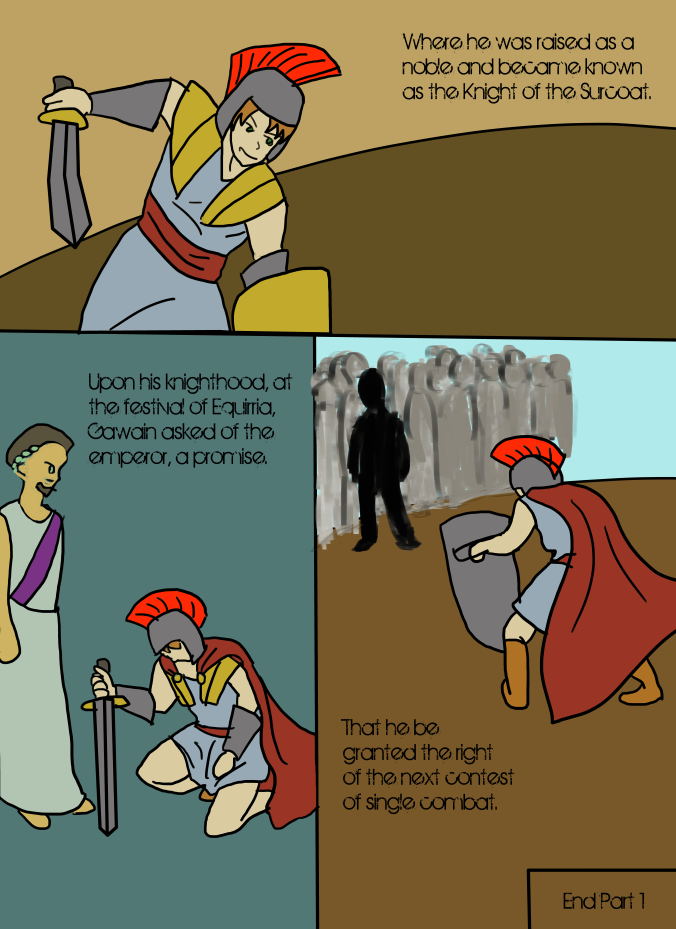By Isha Vazquez
The Legend of King Arthur was popularized by Geoffrey of Monmouth’s, Historia Regum Britanie, a historical biography of King Arthur. Afterwards, many retellings of Arthur’s legend surfaced, most notably, Thomas Malory’s Le Morte Darthur. Although Malory’s account of the Arthurian world presents idealized notions of knighthood, he himself was a knight who was guilty of extortion, attempted murder and rape. Yet, one of his most prominent characters from Le Morte Darthur is Sir Lancelot, who is regarded by Malory and people of the Arthurian community as the very epitome of exemplary knighthood and chivalry. However, there are in fact many episodes throughout the text that proves that Lancelot frequently disobeys the Pentecostal Oath, and therefore, he is not the “best knight in the world” (Malory 329). Moreover, it his love and devotion for Guenivere that ultimately leads to the collapse of the Round Table, and thus, to Arthur and his kingdom’s demise.
Lancelot’s relationship with the Queen Guenivere is first seen as problematic in a conversation between Arthur and Merlin. In it, Arthur tells him that he wants to marry Guenivere, but Merlin warns him that she will fall in love with Lancelot (Malory 50). In fact, Merlin, who can see the future, knew of the danger that their love would pose to Arthur’s life, so he tried to prevent the marriage from happening. Nevertheless, Arthur marries Guenivere and he acquires the Round Table as her dowry, which he uses to establish a fellowship of knights. Moreover, to be in the fellowship of the Round Table, the knights swear an oath which serves as the paradigm of knighthood. The oath, which is sworn every year at Pentecost, is the foundation of the fellowship and their loyalty to King Arthur, and if violated, the knights are expulsed from the Round Table. Furthermore, it details the ideal behavior of a knight, where they should “give mercy unto him that asketh mercy” and “always to do [women]…succor,” Additionally, it states that a knight should not murder, nor engage “wrongful quarrel for no love, nor…wordly goods” (Malory 57). The Arthurian community believes that Lancelot, by means of the knightly behavior stipulated in the oath and by his skills in battles, “[surpasses] all the other knights” (Malory 95). However, the problems are that he does not always follow this oath nor is he entirely loyal to Arthur, instead, he tries to justify and/or force his wants into the oath. It is only because “Queen Guenivere had him in great[est] favour above all the other knights” that he performs noble deeds (Malory 95). Nonetheless, Lancelot has assisted women and aided Arthur in many successful battles. Yet, when revealed that the prime motivation for his deeds was to win the favor of Queen Guenivere, they become less righteous and more for the sake of glory.
Moreover, one of the many instances where Lancelot violates the Pentecostal Oath, ” is witnessed in “A Noble Tale of Sir Lancelot de Luke.” In this episode, a lady asks Lancelot’s help in bringing her falcon down from a tree to which he abides and takes off his armor for mobility. However, it is revealed that it was a trap devised by her husband, Sir Phelot, to kill the Lancelot while he was unarmored. Nonetheless, he manages to render Sir Phelot unconscious by throwing a bough at him then Lancelot takes advantage of his state, grabs Phelot’s sword and without mercy nor hesitation, he splits his head in two. While Lancelot’s anger is justifiable, he was never at a true disadvantage, his prowess has been emphasized and praised countless of times, which makes the cruel killing of an unconscious man even more malevolent. Afterwards, he ignores his wife when “she swooned as though she would die,” by stating that it was what they deserved for their “falsehood”(Malory 118). Janet Jesmok, who has written the Arthuriana journal, states, ” [Lancelot] kills Phelot without … mercy … ignores the distressed lady and instead attempts … to rearm and reestablish his public persona” (38). By “public persona,” Jesmok refers to what the Arthurian community perceives him to be: “the best knight in the world” (Malory 329). Still, his actions are deemed dishonorable and unchivalrous by the Pentecostal Oath.
Accordingly, Lancelot’s failures are further emphasized in “The Noble Tale of the Sangrail,” in which he goes on the quest for the Holy Grail. However, Lancelot miserably fails the quest as God deems him as sinful because his deeds, as previously mentioned, have been performed on Guenivere’s behalf and not for Him. Lancelot himself confirms when he confesses to a hermit:
“all my deeds of arms … I have done … for the queen’s sake, and for her sake would I do battle were it right or wrong; and I never did a battle all only for God’s sake, but for to win worship and to cause me the better to be beloved, and little or not I thanked God of it” (Malory 332).
What is troubling about this quote is that it highlights Lancelot’s greatest flaws: he does not care for right nor wrong as long as it is done for the sake of Guenivere. Another concerned raised by his confession is that, although Lancelot portrays himself as a humble knight, he reveals that he performs noble deeds in order to be praised and adored by others. Afterwards, he swears to God that he shall do no more for the queen’s behalf, yet when he returns to the court he “began to resorte unto Queen Guenivere again” (Malory 403). Their affection for each other grow more passionate and they have frequent “privy draughts” that surprises many, and leaves Agravaine, the nephew of Arthur and knight of the Round Table, “open-mouthed” (Malory 403).
In the last chapters of Le Morte Darthur Guenivere and Lancelot’s relationship grows and as the threats of danger increases for Guenivere, Lancelot becomes her champion, and with each time he saves her, “the socially divisive impact of his act[s] of rescue increases, ” as Dorsey Armstrong notes (176). One instance is when Meliagaunt, a knight of the Round Table who kidnaps the queen out of lustful love, accuses Guenivere of adultery. His allegation stems from the fact that he saw blood in Guenivere’s bed, which he thought was from one of the ten injured knights that were with her when he kidnapped her. However, her faithlessness to Arthur is acquitted by Lancelot on a technicality: it was not the other knights who were with her, but Lancelot himself, albeit he does not mention this. Thus, Arthur suggests that Meliagaunt and Lancelot engage in trial by combat. Eventually, Lancelot overpowers him and, motivated to avenge Guenivere, slays him even though he explicitly asks for mercy. Consequently, Lancelot again fails to uphold the demands stipulated in the Pentecostal oath where a knight should not engage in “wrongful quarrel” and fails to “give mercy unto him that asketh mercy” (Malory 57). Additionally, even though Meliagaunt’s death saves the queen, his allegations are left unresolved since there was still someone in the queen’s chambers. Thus, the speculations of infidelity remain and Agravaine, joined by Mordred become even more suspicious.
Lancelot’s final actions create irremediable tensions within the knighthood of the Round Table, for Mordred and Agravaine’s hate towards Guinevere and Lancelot grow and they begin to watch over them “every night and day …. [to] put them both to rebuke and shame” (Malory 466). Their concern is that the queen and Arthur’s most trusted knight have shamelessly displayed their love to the court, and they perceive this as an attack to Arthur’s worshipfulness, since, as Agravaine claims, “King Arthur [will] be shamed” (Malory 468). Consequently, they and twelve other knights, decide to apprehend the traitorous pair, and even though they succeed, only Mordred was able to escape from Lancelot’s wrath alive. Finally, Lancelot becomes Guinevere’s champion once more as he rescues her from Arthur’s death sentence, yet in the process, he kills Gawain, and Gaheris and Gareth, who were both “unarmed and [unaware]” (Mallory 480). Due to Lancelot’s love and devotion for Guenivere, he ends up singlehandedly destroying the Round Table, as he kills Arthur’s most cherished and trusted knights.
Although Lancelot is thought to be the best knight of the Round Table, it is because Arthur seeks to bring Lancelot to justice that he is vulnerable to Mordred’s attack which ends his life, thus destroying his kingdom. Thomas Malory purposefully portrays Lancelot as if he were an exemplary model of knighthood and chivalry, yet when his character is examined closely and unbiasedly, one realizes that this is not necessarily true. In fact, the episodes previously noted, clearly point out how Lancelot fails to follow the stipulations of the Pentecostal Oath. Additionally, he often manipulated the oath to his convenience as he performs chivalric acts for the sake and adoration of Guinevere, which became a dangerous threat to the unity of the fellowship of the Round Table. Moreover, he betrays King Arthur, and ultimately, it is his relationship with Queen Guinevere that results in Arthur’s demise and the destruction of his kingdom, thus proving he is not the best knight of the Round Table.
Works Cited
Armstrong, Dorsey. Gender and the Chivalric Community in Malory’s Morte D’Arthur. UP of Florida, 2003.
Jesmok, Janet. “Comedic Preludes to Lancelot’s ‘Unhappy’ Life in Malory’s ‘Le Morte Darthur.’” Arthuriana, vol. 14, no. 4, 2004, pp. 26–44. JSTOR, JSTOR. http://www.jstor.org/stable/27870654.
Malory, Thomas. Le Morte Darthur. Edited by Helen Cooper, Oxford University Press, 2008.




























